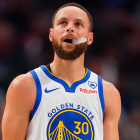Ten minutes before the Philadelphia 76ers' first practice this year, head coach Brett Brown pulled J.J. Redick aside to deliver a surprising message: "We want to bring you off the bench."
So began the Sixers' fascinating experiment. Since the first game of the preseason, they have started Markelle Fultz, breaking up the unit that boasted the best net rating (plus-21.4) of any five-man lineup that played at least 300 minutes last season and helped Philadelphia win 52 games and its first playoff series since 2012.
At the beginning of the second half, however, Fultz is almost always on the bench, with Redick slotting back in alongside Joel Embiid, Ben Simmons, Robert Covington and Dario Saric. This is not the first time the Sixers have been creative their rotation: In an effort to stagger Simmons' and Embiid's minutes, their analytics staff suggested an unorthodox series of quick substitutions last season, which helped Brett Brown optimize his lineups.
A consummate teammate, Redick was on board from the beginning, though some insight from the analytics department did help him feel more comfortable about the change.
"I said 'OK,'" Redick told CBS Sports this week. "We talked again twice over the next two days. The extent of it was 'whatever the team needs.' I was curious about how the rotation would work, but Sergi [Oliva] from analytics showed me my minutes, and I was fine with it. I went to Markelle and told him, 'Hey man, go kill. I'm your biggest fan.'"
The problem for the Sixers is that it's not exactly working. At least not yet.
In 52 minutes with Fultz playing alongside Simmons and Embiid, the Sixers have a net rating of minus-9.3 points per 100 possessions. When Fultz sits and their two stars are still on the court, the Sixers' net rating jumps to plus-17.9 in 41 minutes. That is staggering. For further emphasis, let's look at the four-man group of Simmons, Embiid, Covington and Saric. When Fultz plays with that group, the Sixers' net rating is minus-34. When Redick joins that quartet, it's plus-6.9.
There are a few reasons for this. Fultz is essentially a rookie, having played 17 games last season while dealing with shoulder issues. Plus, though he's seemingly fully healthy from a physical standpoint, he still hasn't fully recovered his mechanics, nor the trust in his jumper.
Right now, Fultz is at his best facilitating and slashing to the basket, two things that are tough to do if he is standing in the corner, watching Simmons run the show. This happens often.
"I think he's trying to figure it out," Redick said. "He's more comfortable on the ball. You see signs or glimpses. He's being asked, essentially, to change how he plays when he's in there with Ben."
The veteran pointed to a couple of encouraging moments from Fultz: a dunk off a cut against the Pistons on Tuesday and a full-speed, pull-up jumper off a dribble-handoff from Embiid in Milwaukee on Wednesday. Fultz told CBS Sports he "definitely" feels more comfortable with the ball in his hands -- it's no coincidence that his best game of the season came in Detroit, with Simmons sitting out.
Redick, meanwhile, is one of the best shooters in NBA history. Plus, few players have ever moved off the ball like Redick does, and this makes him a far smoother fit with the starting lineup.
To illustrate all this, just watch an early possession against the Bucks in which Simmons and Embiid try to execute a dribble handoff with Fultz standing in the corner. Look where Eric Bledsoe is standing as Simmons comes off the DHO: He's dropped all the way down to the block to cut off any driving lane for Simmons because he doesn't respect Fultz's shot.
Now, here's a possession from the third quarter with Redick in the game. Yes, this is in semi-transition, but the Bucks have plenty of players back. Simmons brings the ball down the wing and drives right to the rack. The camera cuts quickly, but you can still see why he has that open lane. Look where Bledsoe is this time. Not only is he way out in the corner hugged up on Redick, he's not even looking at Simmons.
These kind of situations are going to keep coming up as Fultz tries to learn on the fly. There's no doubt he's going to "keep fighting," as he put it, and it helps to have Redick is in his corner.
"He's been here from the start," Fultz said. "Just motivating me to work hard and just sticking through it physically and mentally with my confidence. He's been one of the biggest supporters behind me in everything I've been doing. Talking to the coaching staff, talking to the media, everything. He's been like a big brother to me."
But how long will the Sixers keep letting Fultz start? While forcing the issue could help him and the team in the long run, it's impossible to argue that the short-term returns have been positive. When addressing the media in Milwaukee, Brown seemed a bit annoyed that the subject has attracted so much attention.
Brown made it clear that he has faith in Fultz and believes his struggles are temporary. The fact they've stuck with him so far shows the organization is committed to supporting him.
"It's part of 82 games, it's part of being 20 years old in the NBA," Brown said. "We're trying to just make sure he knows he has a bunch of people around him trying to wind him up and help him. It starts with him trying to help himself. It's just part of his evolution in a very difficult league."


















